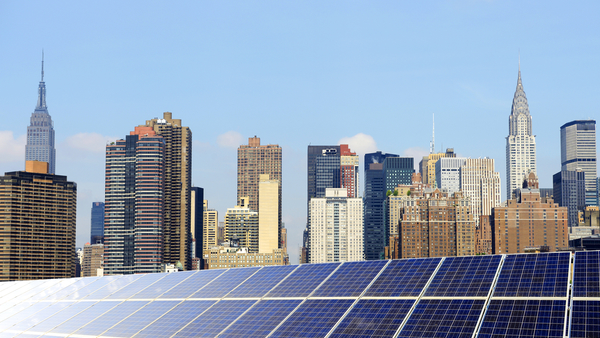Staying safe while going green: How to mitigate the risks of roof-mounted solar panels
Jul 19, 2016 | By Skip Donnell

A roof-mounted solar photovoltaic (PV) system can be a great way for a business to save money on its power bill and show a commitment to a cleaner, more sustainable environment. But the benefits are not without risk.
Helping property owners understand the potential risk of these systems and how to manage them is a great way for insurance agents and brokers to add value for their clients. And insurance companies can be a great source of information on this topic.
While solar power technology has been around for decades, the potential risks are not well-understood. Given increasing demand for such systems, now is the time for agents, brokers and insurers to help clients understand the challenges of such systems and what can be done to safely reap the benefits.
So what are the risks?
First, the potential for fire must be top-of-mind when installing a roof-top mounted PV system. Early failure of components like electrical wiring is the leading cause of fires. The lack of clear electrical codes governing solar equipment, use of non-commercial-grade equipment and poor installation may further increase the risk.
The “blind spot” is another issue that can arise when a ground fault affects the grounded current-carrying conductor and safety devices fail to detect the problem. With a second ground event, the energy flows through the short, which may cause electrical shock or fire.
PV systems can also make a roof fire worse and more difficult for firefighters to extinguish. The gap between PV panels and the roof can trap heat, allowing a fire to spread quickly. Solar array panel configuration and spacing is critical as roofing material heat levels can vary depending upon the size of the gap.
A PV array can cause a range of complications if firefighters require roof access — from an increased chance of slips and falls to a heightened risk of shock. In some cases, an entire roof can become electrified, preventing access altogether.
A PV system can also add significant weight to a roof, which, if the roof is not designed to handle the load, may cause damage or structural degradation over time. The extra weight of snow and rain can make this situation even worse.
Mitigating risk
The good news is that it is possible to manage and mitigate these risks. It all starts with proper installation and well-secured systems.
Because the concept of solar power has become so mainstream, business owners may assume that PV system installation and maintenance are well regulated. However there are few established standards. Further, installation crews may lack experience.
Before installation, business owners should ensure a roof can structurally hold a PV system, or find a location other than the roof on which to install the system. They should also consult with independent experts to test and approve the panels to be installed. Roof panel placement should leave plenty of clear exits and pathways for maintenance crews and firefighters.
Business owners should also discuss their plans to install roof-top mounted solar equipment with the local fire department. Once the systems are installed, owners should familiarize firefighters and each shift’s fire captain (most urban departments have three shifts within a 24-hour period) with their operations and proposed solar panel system. After installation, business owners should inspect the system with an independent expert. Pay special attention to wire management, and make sure panels are secure to minimize wind lift.
Owners should also have qualified contractors inspect the systems and provide preventive maintenance at least annually and after major weather events.
Agents and brokers — working with insurers — have a great opportunity to add value for commercial property owners by helping them mitigate the risks of roof-top mounted solar equipment.